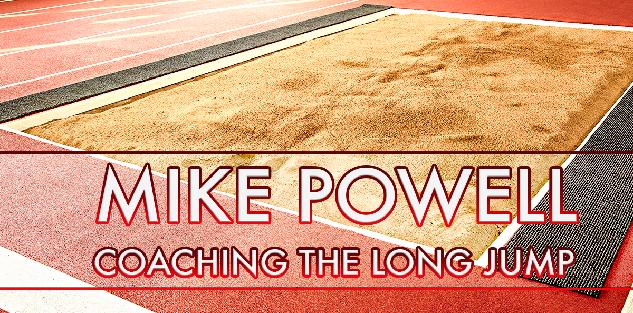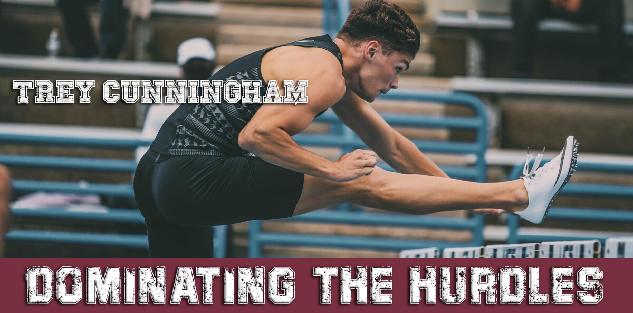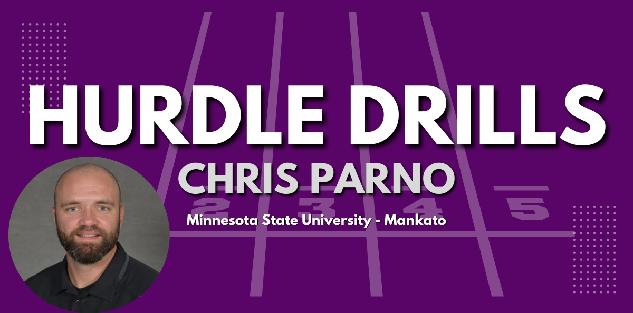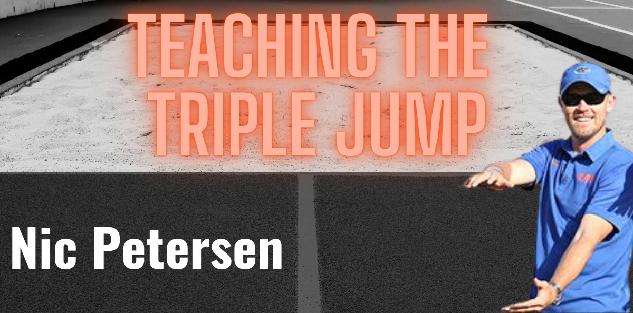Featured courses
- The Ultimate Guide to Coaching Track and Field by Jackson Chlebowy
- How TCU Coach Khadevis Robinson Builds Mental Toughness for Big 12 Track by William Markey
- Two Points of Focus When Coaching and Training Hurdles by Grant Young
- Four Keys to Maximize Winning Potential in a 400m Race by Grant Young
- Three Lessons Every Distance Running Coach Should Know by Grant Young
- Olympic Medalist Jasmine Moore’s Triple Jump Approach Technique Keys by Grant Young
- Build Strong Triple Jump Foundations with 3 Key Drills by William Markey
- Two Cues to Help With Track and Field Relay Handoffs by Grant Young
- Four Shot Put Drills to Help Develop Your Athletes by Grant Young
- Three Training Tips For Coaching 400m Runners by Grant Young
- Four Tips for Teaching the Javelin Throw by Grant Young
- 3 Pole Vault Check Points From Legendary Kansas Coach Tom Hays by Grant Young
- Two Valuable Hammer Throw Training Tips by Grant Young
- 3 Must-Try Offseason Shot Put Drills by William Markey
- Four Essential Tips For Coaching Track Relays and Sprints by Grant Young
- Florida Gators Coach Nic Petersen’s Two Keys for Teaching the Triple Jump by Grant Young
- Three Effective Drills for Improving the Long Jump by Grant Young
- Three Drills for Sprinters That Track Coaches Swear By by Grant Young
- Four Pole Vault Drills All Track and Field Coaches Should Know by Grant Young
- Explosive Track and Field Training to Level Up This Summer by Tyler Rathke
- Throwing Secrets: The Entry by Tyler Rathke
- How to Find an Endurance Athlete’s Proper Training Pace by Grant Young
- The Technique Behind Mykolas Alekna’s Discus World Record by Grant Young
- How to Build a Sprinter's Training Regimen by Grant Young
- How to Teach the Glide Shot Put by Grant Young
- Three Hurdle Drills All Track Coaches Should Know by Grant Young
- How Distance Running Coaches Can Get the Most Out of Their Athletes by Grant Young
- The Technique Behind Mondo Duplantis' Pole Vault World Record by Grant Young
- How to Coach Weightlifting For Increased Speed and Acceleration by Grant Young
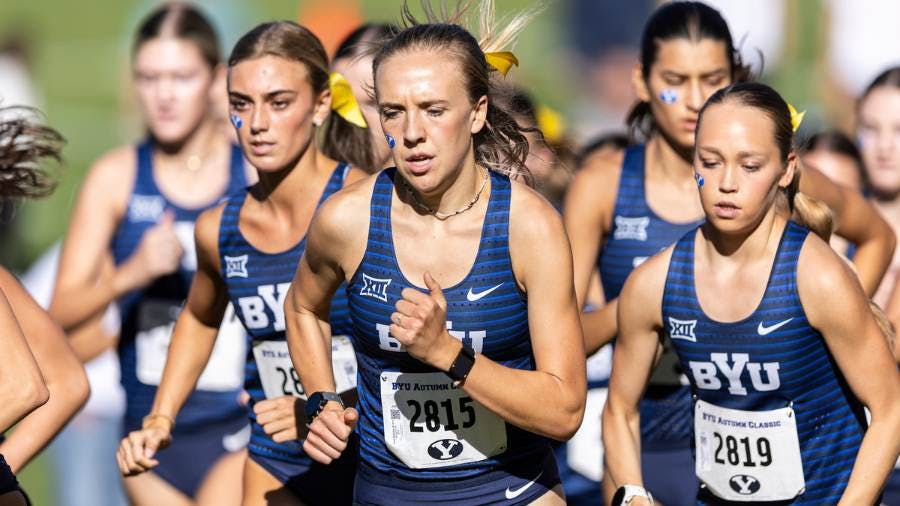
Three Lessons Every Distance Running Coach Should Know
- By Grant Young
Teaching distance runners the proper physical and mental techniques they need to maximize success is a fundamental aspect of being a distance running coach.
It's essential to focus on developing proper running form and technique to help runners maximize their efficiency and reduce the risk of injury. This includes aspects such as posture, foot strike, cadence, and breathing techniques.
In addition to physical techniques, coaching distance runners also involves addressing the mental aspects of running. This includes strategies for building mental toughness, managing race-day nerves, and staying motivated during challenging workouts.
By providing comprehensive guidance on both the physical and mental aspects of distance running, coaches can help athletes reach their goals and maximize their success in the sport.
Of course, knowing what’s worth teaching your runners and what should get left out from your daily lessons is easier said than done. But if you’re unsure about how to construct your fundamental running coach's blueprint, heed the tried and true wisdom of Diljeet Taylor.
Coach Taylor is currently the women’s cross-country head coach at Brigham Young University (BYU), a role she has held since 2016. Since arriving at BYU, Coach Taylor led BYU to an NCAA Division I Women's Cross Country National Championship (2020-21), coached 1 Individual Cross Country Champion (Whittni Orton - 2021), led BYU to two national runner-up finishes (2019 & 2021), guided BYU athletes to 16 All-America honors, and produced one Big 12 Conference Championship (2023) and five West Coast Conference Championships (2018, 2019, 2020-21, 2021, 2022).
Before coming to BYU, Taylor coached at Cal State Stanislaus from 2007 to 2016. During her time at Cal State Stanislaus, Taylor guided All-American Courtney Anderson to an NCAA Division II championship in the 1,500-meter run in 2014. From 2013 to 2016, the distance and cross country programs accumulated 16 All-America honors, including consecutive runner-up finishes in the indoor championships by the distance medley relay team.
Coach Taylor’s ‘Distance Running: The Basics’ course will give you all the information you need to help build your cross-country team from the ground up and give your athletes the physical and mental knowledge they need to blossom into the best versions of themselves.
Training
Coach Taylor explains that distance runners require a yearly training cycle so that they never get too out of shape.
Because creating an entire annual plan at once doesn’t make sense considering how much can change within that timeframe, Coach Taylor suggests that coaches segment their seasons into three phases: a macrocycle, a mesocycle, and a microcycle.
The macrocycle is a topical blueprint of a plan that you are roughly drafting for your athletes to follow. As previously mentioned, there can’t be any expectation that this macrocycle will go exactly how you write it out. But having a rough guideline for yourself and your athletes to follow is beneficial for ensuring that you stay on track (literally and figuratively) as the season progresses.
The mesocycle should be written about three weeks to a month in advance. Coach Taylor notes that she writes out all of her practice plans about three weeks in advance. She does this because this is typically far enough out that she can thoughtfully plan out where she wants her runners to be in terms of physical preparedness while being close enough to real-time that she’ll have an accurate idea of what they will need in a few weeks. In addition, her not writing out her practice plans last minute ensures that she’s prepared for any last-minute changes that life forces upon her and her team.
And finally, the microcycle is a daily practice plan that Coach Taylor suggests constructing during the actual week you’re currently in. These will be precise practice plans that shouldn’t change much.
Training Programs

When it comes to training programs for 800-meter runners, Coach Taylor says that coaches should come up with a combination of both speed and strength, because runners need both in order to be successful from that distance.
The workouts should usually be at a higher intensity and have a longer recovery.
A great staple workout for 800-meter runners is eight 200-meter runs at a high intensity with two minutes rest and then six 200-meter runs with two minutes rest.
Coach Taylor notes how important it is for runners to know what their pace is without needing to look at their watch every few seconds. And the best way for them to figure this out is by doing repetitive interval training like what was just listed.
For runners that focus on one-mile or two-mile races, their focus during training should be aerobic workouts that emphasize strength, where the volume is just as important as the intensity. This can encompass either 800-meter or 1000-meter repeats.
Strength Training
Strength training is another crucial component of a distance runner’s training regiment. Coach Taylor explains how she has her runners do strength training twice a week, typically after their recovery runs during practice.
The biggest focus in these exercises is core work. Since core strength and stability are paramount to a distance runner’s success, workouts that activate the core muscles should take priority.
There’s also no need for distance runners to be lifting overly heavy. Instead, they can focus on simple bodyweight exercises like pushups, body weight squats, lunges, and other exercises like those.
Also doing hurdle drills on the track after recovery runs is a great way to lengthen muscles and increase core stability.

